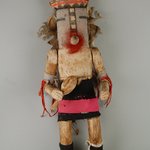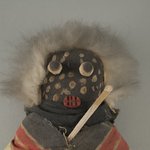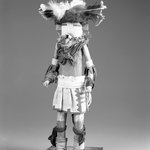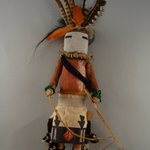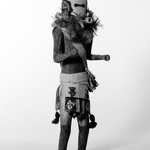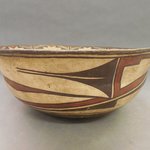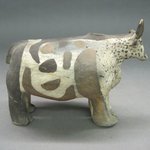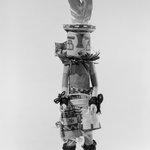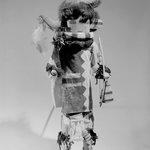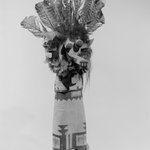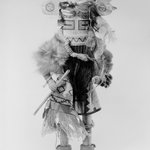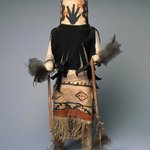

A:shiwi (Zuni Pueblo). Kachina Doll (Hilili Kohanna), late 19th century. Wood, pigment, horse hair, hide, cotton, feathers, tin, 20 x 6 1/2 x 5 1/2 in. (50.8 x 16.5 x 14 cm). Brooklyn Museum, Museum Expedition 1903, Museum Collection Fund, 03.325.4648. Creative Commons-BY (Photo: Brooklyn Museum, 03.325.4648_PS6.jpg)

A:shiwi (Zuni Pueblo). Kachina Doll (Hilili Kohanna), late 19th century. Wood, pigment, horse hair, hide, cotton, feathers, tin, 20 x 6 1/2 x 5 1/2 in. (50.8 x 16.5 x 14 cm). Brooklyn Museum, Museum Expedition 1903, Museum Collection Fund, 03.325.4648. Creative Commons-BY (Photo: Brooklyn Museum, 03.325.4648_threequarter_PS6.jpg)
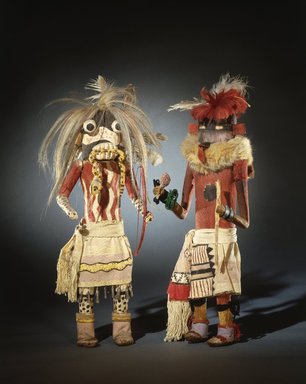
A:shiwi (Zuni Pueblo). Kachina Doll (Hilili Kohanna), late 19th century. Wood, pigment, horse hair, hide, cotton, feathers, tin, 20 x 6 1/2 x 5 1/2 in. (50.8 x 16.5 x 14 cm). Brooklyn Museum, Museum Expedition 1903, Museum Collection Fund, 03.325.4648. Creative Commons-BY (Photo: , 03.325.4648_03.325.4653_SL1.jpg)

A:shiwi (Zuni Pueblo). Kachina Doll (Hilili Kohanna), late 19th century. Wood, pigment, horse hair, hide, cotton, feathers, tin, 20 x 6 1/2 x 5 1/2 in. (50.8 x 16.5 x 14 cm). Brooklyn Museum, Museum Expedition 1903, Museum Collection Fund, 03.325.4648. Creative Commons-BY (Photo: Brooklyn Museum, CUR.03.325.4648_front.jpg)
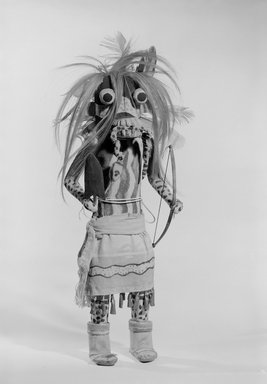
A:shiwi (Zuni Pueblo). Kachina Doll (Hilili Kohanna), late 19th century. Wood, pigment, horse hair, hide, cotton, feathers, tin, 20 x 6 1/2 x 5 1/2 in. (50.8 x 16.5 x 14 cm). Brooklyn Museum, Museum Expedition 1903, Museum Collection Fund, 03.325.4648. Creative Commons-BY (Photo: Brooklyn Museum, 03.325.4648_acetate_bw.jpg)
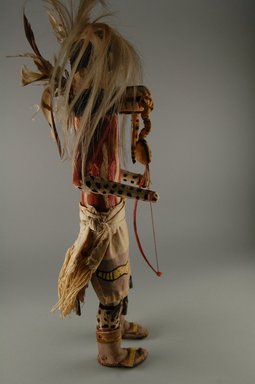
A:shiwi (Zuni Pueblo). Kachina Doll (Hilili Kohanna), late 19th century. Wood, pigment, horse hair, hide, cotton, feathers, tin, 20 x 6 1/2 x 5 1/2 in. (50.8 x 16.5 x 14 cm). Brooklyn Museum, Museum Expedition 1903, Museum Collection Fund, 03.325.4648. Creative Commons-BY (Photo: Brooklyn Museum, CUR.03.325.4648_side.jpg)
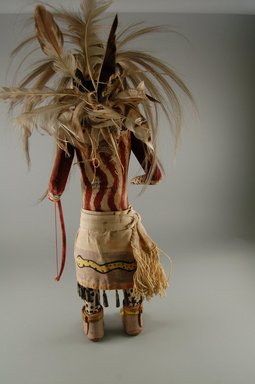
A:shiwi (Zuni Pueblo). Kachina Doll (Hilili Kohanna), late 19th century. Wood, pigment, horse hair, hide, cotton, feathers, tin, 20 x 6 1/2 x 5 1/2 in. (50.8 x 16.5 x 14 cm). Brooklyn Museum, Museum Expedition 1903, Museum Collection Fund, 03.325.4648. Creative Commons-BY (Photo: Brooklyn Museum, CUR.03.325.4648_back.jpg)
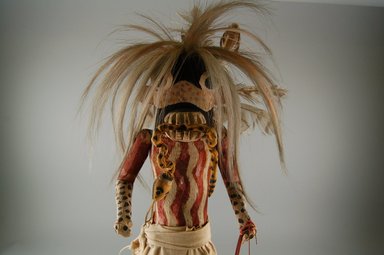
A:shiwi (Zuni Pueblo). Kachina Doll (Hilili Kohanna), late 19th century. Wood, pigment, horse hair, hide, cotton, feathers, tin, 20 x 6 1/2 x 5 1/2 in. (50.8 x 16.5 x 14 cm). Brooklyn Museum, Museum Expedition 1903, Museum Collection Fund, 03.325.4648. Creative Commons-BY (Photo: Brooklyn Museum, CUR.03.325.4648_detail1.jpg)
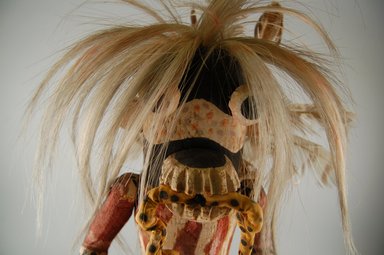
A:shiwi (Zuni Pueblo). Kachina Doll (Hilili Kohanna), late 19th century. Wood, pigment, horse hair, hide, cotton, feathers, tin, 20 x 6 1/2 x 5 1/2 in. (50.8 x 16.5 x 14 cm). Brooklyn Museum, Museum Expedition 1903, Museum Collection Fund, 03.325.4648. Creative Commons-BY (Photo: Brooklyn Museum, CUR.03.325.4648_detail2.jpg)
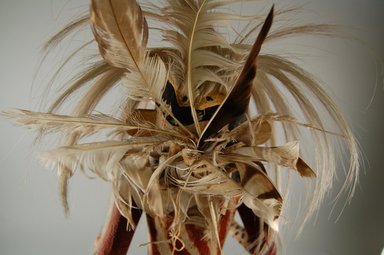
A:shiwi (Zuni Pueblo). Kachina Doll (Hilili Kohanna), late 19th century. Wood, pigment, horse hair, hide, cotton, feathers, tin, 20 x 6 1/2 x 5 1/2 in. (50.8 x 16.5 x 14 cm). Brooklyn Museum, Museum Expedition 1903, Museum Collection Fund, 03.325.4648. Creative Commons-BY (Photo: Brooklyn Museum, CUR.03.325.4648_detail3.jpg)
Kachina Doll (Hilili Kohanna)
Arts of the Americas
Esta kachina tiene las características de dos espíritus diferentes. Kachina Hilili se conoce por llevar una serpiente real o rellena alrededor de su cuello durante las danzas Hilili que se realizan con Kachinas Cabezas de Barro (payasos que hacen travesuras y entretienen a la multitud). Alternativamente, esta kachina puede representar a un Bailarín Serpiente, un hombre que danza con serpientes cascabel o serpientes toro vivas en una danza del clan, representando al ancestro de dicho clan. Esta importante ceremonia asegura agua para las cosechas y es celebrada hasta hoy, aunque las ceremonias están cerradas al público para que los visitantes ruidosos no perturben a las serpientes.
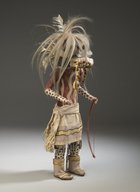


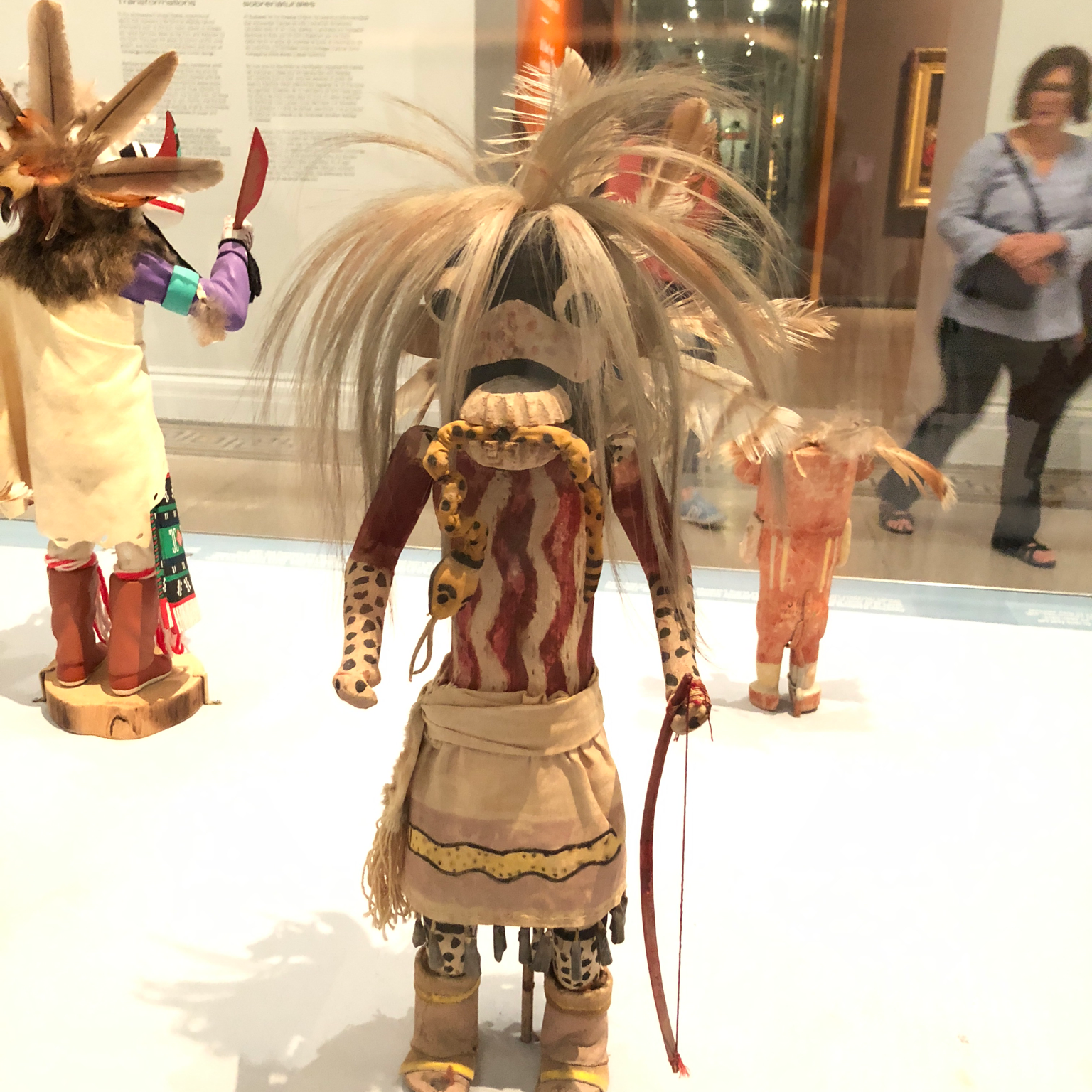
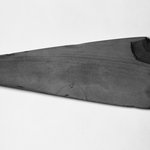
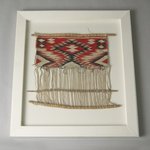
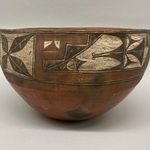

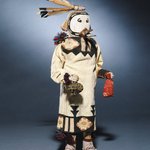
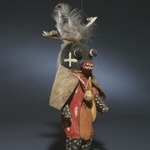
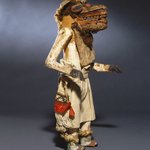
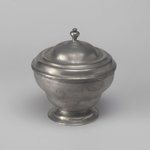
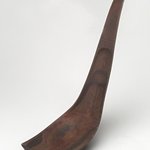
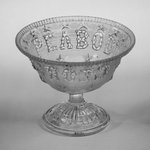

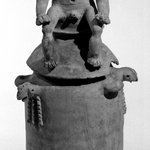
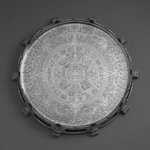
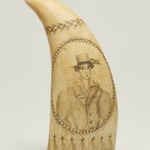
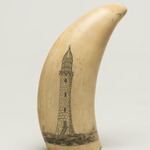

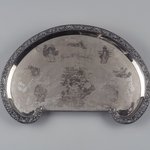
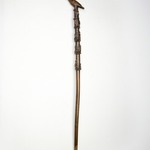
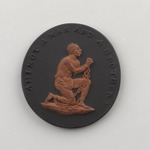
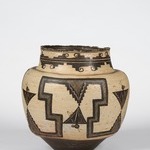
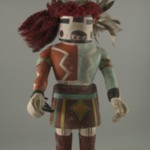
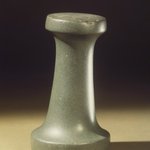
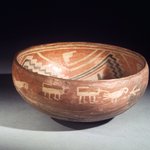


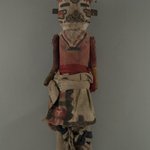
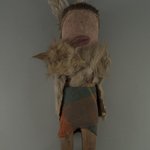
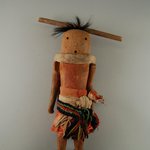
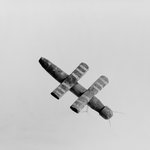
![Kachina Doll (Pakwen [Clown])](https://d1lfxha3ugu3d4.cloudfront.net/images/opencollection/objects/size2_sq/CUR.03.325.4606_front.jpg)
![Kachina Doll (Muya Pona [Clown])](https://d1lfxha3ugu3d4.cloudfront.net/images/opencollection/objects/size2_sq/03.325.4601_03.325.4602_03.325.4606.jpg)
